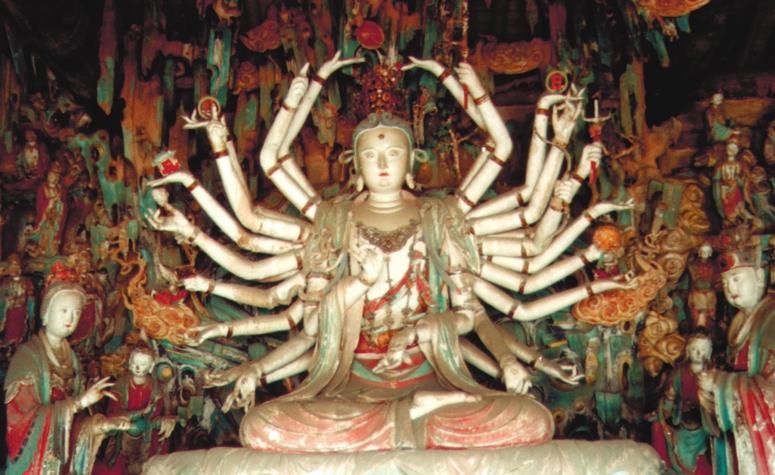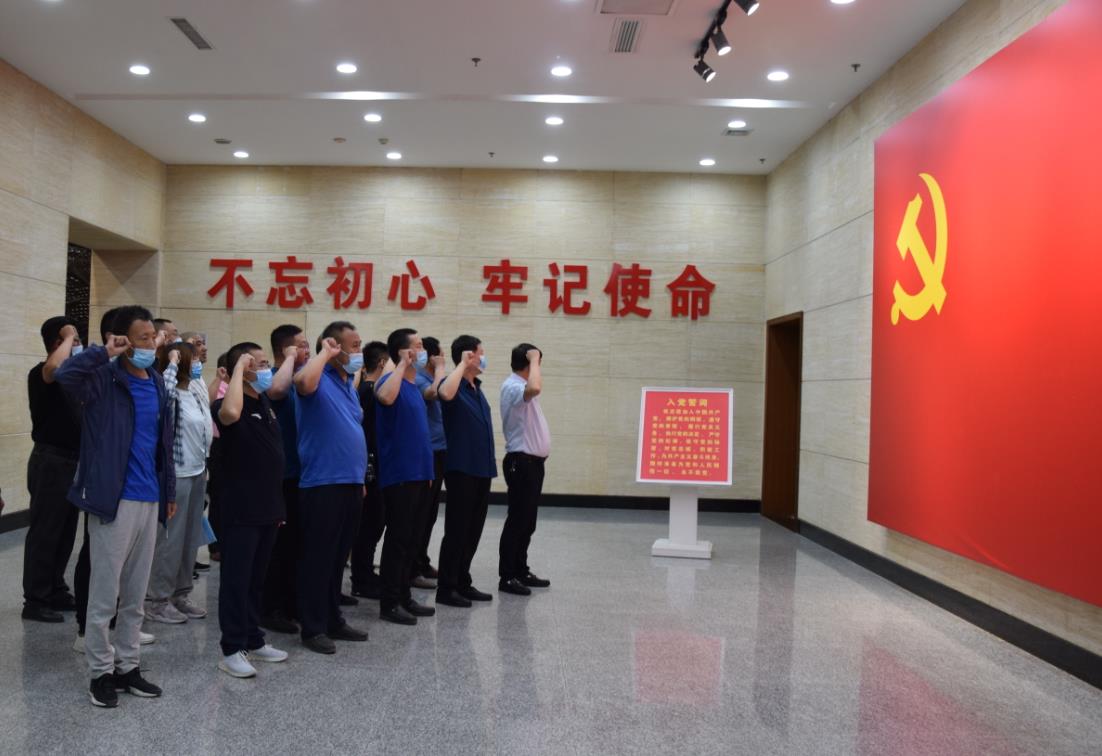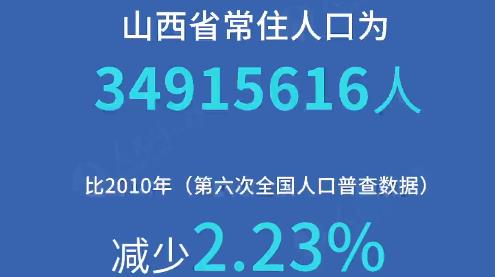
An Avalokitesvara Bodhisattva statue featuring many arms is among the most eye-catching statues in Shuanglin Temple.
Shanxi is an ideal destination for researchers and tourists interested in history to explore ancient Chinese culture as it is home to China's largest number of preserved ancient buildings and structures.
Among them, Shuanglin Temple in Pingyao county in central Shanxi is well-known for its Buddhist sculpture and artwork.
The temple, some six kilometers to the southwest of the county seat of Pingyao, is known as "the museum of colored sculptures in China "as it houses more than 2,000 colorful statues and carved figures, the greatest number in Shanxi.
Researchers have struggled to date the Buddhist temple, originally called Zhongdu Temple, because of limited written evidence.
Inscriptions on a stone stele in the temple indicate that it was renovated in 571.
"As 571 is noted as the year of renovation, we are sure that the year of its first construction should be earlier than that," said Li Chun, curator of the Shuanglin Temple Colored Sculptures Museum.
According to Li, Shuanglin Temple had been destroyed and reconstructed many times in history, with today's preserved structures built during the Ming (1368-1644) and Qing (1644-1911) dynasties.
"However, the unique selling point of Shuanglin Temple is not its ancient structures," Li said. "The most precious wealth is the 2,056 colored statues and sculptures featuring Buddhist figures and local donors, as well as the decorative carvings surrounding the statues."
Among all the Buddhist figures, the most research-worthy are the four guardians of the Buddha.
"The guardians are static, but we sense their movement when watching them closely," Li said.
He explained that the dynamic comes from their facial expressions and their powerful and muscular limbs in poses of movement.
Another statue with a full sense of movement is Bodhisattva of Veda.
"The 50-centimeter-tall figure stands like a bow, with a potential energy to move violently," Li said."His powerful muscles can be sensed even under the armor, as the armor is stiffened to such an extent that it seems ready to burst at any moment."
In addition to the Buddhist figures, there are also 30-plus small statues of donors who had contributed money, labor and craftsmanship to the building and renovating of the temple as well as the Buddhist statues.
"The donors, with their names and other information inscribed, were the ordinary residents in neighboring villages," Li said.
The donors belong to various periods ranging from the Northern Song to the Ming Dynasty, according to the inscriptions.
"From the point of researchers, the figures of donors are even more significant than the Buddhist figures," Li said.
The garments and ornaments they wore, for instance, are valuable material evidence for research on clothing styles of different periods, according to the curator.
And such details as their postures, the use of colors and lines in creating the statues, can also offer a frame of reference for studying Chinese sculpture arts in various periods, Li said.
Peng Ke’er contributed to this story.
By YUAN SHENGGAO
 山西路桥:党建引领 建好“四好农村路”山西路桥建设集团党委扎实开展“党建质量提升年”,实施“六大工程”,立足“十四五”高质量、高速度、高效益发展的战略基点,全面提高党建质量和党建引领发展水平,为打造“国内一流的交通基础设施投资、建设、施工现代化企业集团”提供坚强政治保障。
山西路桥:党建引领 建好“四好农村路”山西路桥建设集团党委扎实开展“党建质量提升年”,实施“六大工程”,立足“十四五”高质量、高速度、高效益发展的战略基点,全面提高党建质量和党建引领发展水平,为打造“国内一流的交通基础设施投资、建设、施工现代化企业集团”提供坚强政治保障。
 常住人口3491万 山西人口普查数据"出炉"山西省统计局向社会通报山西省第七次全国人口普查主要数据。数据显示,山西省常住人口为34915616人,比2010年(第六次全国人口普查数据,下同)减少2.23%,年平均减少0.23%。山西省常住人口总量减少,主要受人口流动变化等因素影响。
常住人口3491万 山西人口普查数据"出炉"山西省统计局向社会通报山西省第七次全国人口普查主要数据。数据显示,山西省常住人口为34915616人,比2010年(第六次全国人口普查数据,下同)减少2.23%,年平均减少0.23%。山西省常住人口总量减少,主要受人口流动变化等因素影响。